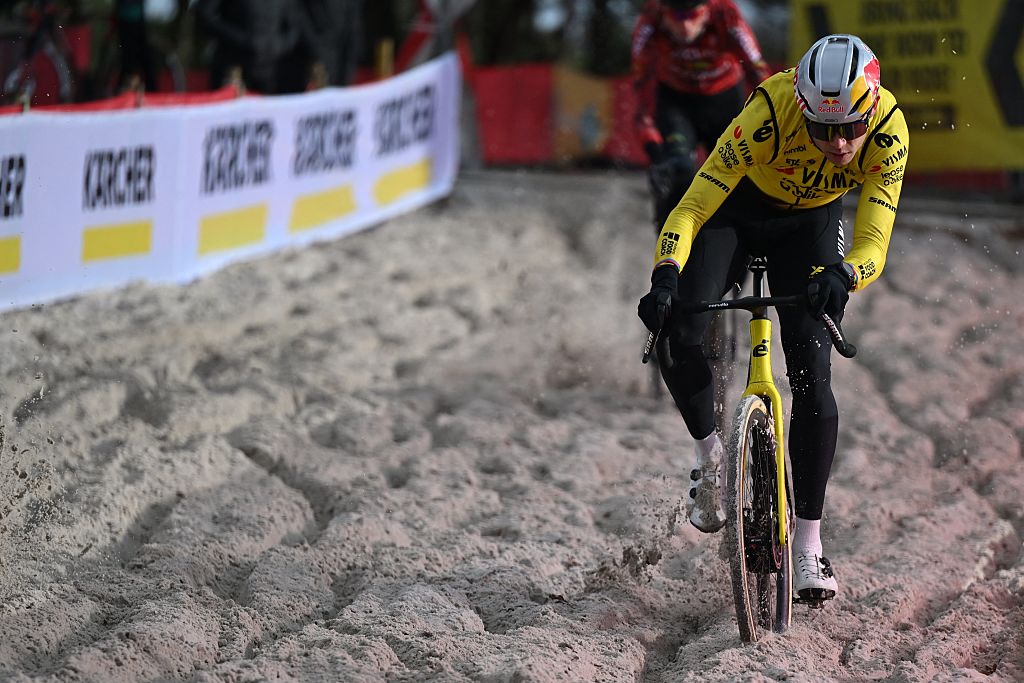In the blood
The latest salvo in sport's ongoing battle against doping has seen 2004 Olympic time trial gold...

News analysis, September 23, 2004
How the new blood doping test works
The latest salvo in sport's ongoing battle against doping has seen 2004 Olympic time trial gold medalist Tyler Hamilton accused of blood doping after initial tests at the Olympics and the Vuelta a España appeared to reveal evidence of blood manipulation. In search of the background and science behind the new test, John Stevenson spoke to Dr Michael Ashenden, project coordinator for the research consortium Science and Industry Against Blood doping, and one of the scientists responsible for developing the new technique.
Dr Michael Ashenden is a man on a mission, and that mission is a very straightforward one: the eradication of blood doping, which he describes as "the most diabolical form of doping."
As the project coordinator for international research consortium Science and Industry Against Blood doping, Ashenden has a deep scientific interest in the subject. But once the subject strays from discussion of fluorescent dyes and antigens, you can tell there is a real passion burning here to end a practice that the former Australian Institute of Sport exercise physiologist believes is extraordinarily dangerous.
"It has to be stamped out," Ashenden tells Cyclingnews over the phone from his organisation's base in Surfer's Paradise, Australia, "and I hope that if there is one positive that comes out of [the Hamilton incident] it's that athletes using this form of doping know they have to stop. It's repugnant."
Blood doping involves using a transfusion of either the athlete's own blood or, more commonly, someone else's, to temporarily increase the quantity of red blood cells in the body and therefore the oxygen-carrying capacity of the blood. It's a startlingly crude but extremely effective performance-enhancer. Unfortunately, it's also beset with serious health risks.
The latest race content, interviews, features, reviews and expert buying guides, direct to your inbox!
"Even in a hospital a doctor will not transfuse unless there is no other option," says Ashenden. The risks are many, and potentially lethal. "You could catch AIDS, you could catch hepatitis, you could get an infection from the needle. You could also become sensitised to the minor blood group proteins so that you would have problems later if you really need a transfusion."
It's these minor blood groups that are Ashenden's area of interest because they produce both the risk from blood doping, and the means to detect it. Everyone is familiar with the major blood groups, A, B and O. If you're type A and you get a transfusion of type B blood, the resulting reaction can be fatal. But there are also many other 'minor' blood groups that depend on the nature of the proteins on the surfaces of the red blood cells.
For a single transfusion, these minor blood groups are not usually an issue. However, it's possible for the immune system become sensitized to them, that is, to learn to treat them as foreign invaders. The proteins we're talking about here are the body's way of differentiating 'self' from 'other'. That sensitisation can subsequently have serious consequences.
"One transfusion can be enough to make you sensitized," says Ashenden. "Subsequently your body might destroy the transfused cells or if there are enough of them you might suffer a haemolytic reaction which can be life-threatening. Once you are sensitized, you're sensitized for life. In hospitals there are tests for this, but they're not going to be used in a hotel room where an athlete is pumping himself full of a team-mate's blood."
The new test
Just as the body can detect the difference between its own and foreign red cells, so the test developed by Margaret Nelson at the Royal Prince Alfred Hospital in Sydney looks at minor blood group proteins to detect whether an athlete is carrying around someone else's blood.
"Everyone has a whole range of blood groups - not just the ABO set that everyone is familiar with," says Ashenden. "There are 10 or 20 minor blood groups.
"The test looks at the minor blood group antigens [proteins]. The test attaches to the red cells a fluorescent marker for, say, blood group X. If you have X then after the test your cells will glow [under ultra-violet light]. If you don't, they won't. So we look at 50-60,000 cells. When you have a mixed population some will have X and some won't, so some will glow and some won't. The only way that can happen is if the person whose blood you're looking at has had a transfusion - that there is someone else's blood there."
Ashenden is certain the test is reliable, not least because it's based on methods that have long been used to pick up possible problems with sensitivity in patients who have previously had transfusions. "This test has been used in hospitals for 10 years. You either have someone else's blood or you don't. You either have the blood group antigens or you don't."
There's no way, according to Ashenden, for an individual to have a mixture of red blood cells from different minor blood groups, other than for him to have had a transfusion.
If the test provides a genuine yes/no answer to the question 'has this person used blood doping?' then how long after a transfusion can it detect manipulation? Isn't there an issue with survival of transfused cells?
"When you reinfuse blood as many as 20 percent of the cells will die within 24 hours," says Ashenden. "But after that they last as long as the original cells - 90-120 days. The window of detection is as long as the cells remain in your system... several weeks."
It's believed that there has been an increase in blood doping in the last couple of years because of the widespread use and effectiveness of EPO testing. While the original test was only effective within a few days of EPO being administered, recent refinements in testing and blood profiling have increased the time frame for EPO detection to several weeks. But those methods don't detect transfusions, so blood doping has made an unwelcome return.
"This slams the door on that because once you have someone else's blood in your system you can be caught," says Ashenden. "You can't wash it out and you can't mask it."
Mystery proteins
It's often said that doping athletes are always one step ahead of anti-doping agencies and the scientists that create detection methods. Ashenden is confident that the homologous transfusion test cannot be easily defeated. For a start, the recipient would have to find a blood donor whose minor blood groups matched the ones known to be the basis of the test. And even then, Ashenden has an ace up his sleeve.
"We haven't declared all the antigens that we test," he says. "Even if they read the article [Haematologica. 2003 Nov;88(11):1284-95] and found a match for the antigens mentioned - one in a million - there is no way they can get a match for the other 'mystery' antigens.
"We spent a lot of time thinking this through and coming up with a watertight strategy."
With a method in the bag for detecting homologous blood doping, Ashenden's group - funded by the US Anti-Doping Agency - is now working on the trickier problem of picking up autologous doping. This is where an athlete stores some of his own blood, allows the body to recover and then reinfuses it. Early research shows that there is a subsequent reduction in the level of the body's own EPO as part of the feedback mechanism through which red cell production is regulated, and an increase in serum iron and bilirubin.
However, Ashenden won't be drawn on SIAB's progress in developing a test for this variety of blood doping. "Dick Pound [head of the World Anti-Doping Agency] has said that we don't have to announce a test before we start using it," says Ashenden. "We are working on a test for autologous transfusion. Athletes will know when it is developed because they will be caught. If an athlete chooses to carry on using a particular form of doing when they know we are bringing in a test, they will be caught."
He won't even hint at whether a test is likely to be introduced next year, 2006 or beyond, except to put on notice anyone who is using this form of doping. "Blood samples from athletes are being stored now and anywhere in the next eight years we can go back and analyse those samples. You can bet London to a brick that there WILL be a test in the next eight years."
Related stories
Hamilton suspended by Phonak, September 22, 2004
Hamilton and Phonak protest innocence, September 22, 2004
Hamilton fails blood tests, September 21, 2004
Anti-doping measures get tougher - Tour de France announces new tests, July 3, 2004

